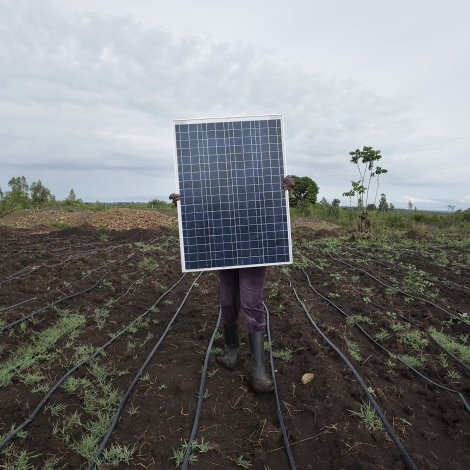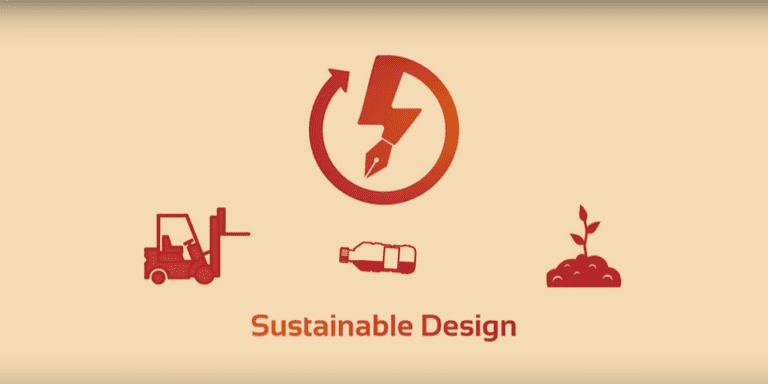Ten years ago, off-grid solar power wasn’t even a blip on the radar. Thanks to significant advancements in solar technology and plummeting costs, solar generation now rivals established fuel technologies as a cleaner, more economical choice. And a few notable success stories like M-Kopa in Kenya and Off-Grid Electric in Tanzania have put off-grid solar on the map as a viable way to combat global energy poverty with climate-friendly technology.
Indeed, the amount of money invested in the off-grid solar sector in 2015 grew 15-fold from 2012, according to a 2016 report from Bloomberg New Energy Finance and Lighting Global. This escalation in investment has fueled exponential growth in solar technology adoption, particularly among the 1.2 billion people worldwide without access to electricity: by mid-2015, more than 89 million people in Africa and Asia owned at least one solar-powered product, and off-grid solar sales are projected to reach $3.1 billion by 2020.
Most of the attention in off-grid solar has focused on one type of product: lamps—justifiably, since this is what the bulk of the off-grid market sells. More than 100 small-scale solar companies are in existence today and have sold over 20 million branded pico-solar products to off-grid households.
A handful of engineers and entrepreneurs, however, are looking to drive off-grid solar energy use beyond household lighting. In the agriculture sector, a few “pico” solar irrigation products have emerged with the promise of helping subsistence and small-scale farmers improve productivity, simply by making it easier and more cost-effective to water their fields.
Solar irrigation without solar panels
Dutch engineer Gert Jan Bom set his sights on solar irrigation long before off-grid solar became “a thing.” The man behind the Volanta community water pump in the 1980s saw the potential for the basics of that same technology to be used in agriculture. But to adapt it for farming, he and his colleagues at the Practica Foundation needed an energy source that would minimize the manual labor of treadle pumps while still costing less than diesel fuel. Treadles and diesel are the two core irrigation technologies that most small-scale farmers without access to electricity depend on. They turned their attention to solar after ruling out other options like hot air and glycerine engines.
In 2009, however, as Bom and his team were working on an irrigation pump design, photovoltaic solar panels cost four times more than they do today. That made them prohibitively expensive to use, particularly in a product meant for people who earn only about $1000 per year. The team tried a different path to capturing solar power: a large and unwieldy steam-powered solar design. It looked like a large satellite dish attached to a small, flywheel-based pump. The design worked (save one explosion that cost Bom his barn), and went for testing in Ethiopia. But the challenges with the size and efficiency of the design eventually stalled the development process.
“Then in March 2014, I took another look at the prices of solar PV panels and found that they had dropped to the point that a steam pump could not really compete on price anymore,” Bom says. It only took a couple months to build a new prototype with a PV panel attached to a DC motor and a reciprocal piston pump. A new company called Futurepump was formed to take the concept to market, and the SF-1 (formerly Sunflower) pump launched in Kenya in July that same year.
Weighing function with affordability
Designing products for low-income customers is all about striking a balance between cost and performance. For Futurepump, the team knew it needed to fit somewhere between the competition: low-cost, high-labor intensity treadle pumps on one end of the spectrum, and high-performance, high-cost diesel-powered pumps on the other. The price range between the two product types was about $150 to $400, with $10 per month in recurring fuel costs for the diesel pumps, and both had significant drawbacks.
“The fuel prices are not good for a small-scale farmer,” explains Kinya Kimathi, Futurepump’s marketing and partnerships director. “If they don’t have enough money to power petrol pumps, they don’t get enough to eat.” Likewise, manual pumps contribute to cyclical household- and community-level problems, because they take time away from schoolwork, chores and family life. “Kids are told they cannot go to school until the field has water. It affects communities quite drastically,” Kimathi adds.
Futurepump was able to design its SF-1 pump to a retail price of about $650. With that, farmers get the pump and a 80-watt photovoltaic solar panel, which on a full day of bright sunlight can pump 12,000 liters of water—enough for farmers with one acre plots. Volume-wise, it pumps more slowly than a diesel-powered pump, but on the other hand, it requires no human labor beyond set-up. It also has a low-power setting, so that it works even on cloudy days. And, it has no recurring fuel costs.
The SF-1 pump was one of the first small-scale solar pumps to launch, but Futurepump is by no means the only organization tackling the challenges of harnessing solar power for small farmers. On the other side of the world, Proximity Designs, in Myanmar, grappled with the same issues while it was designing its own small-scale solar submersible pump, the Lotus. Proximity has been making affordable products for small-scale farmers since 2004, and now reaches about 80 percent of Myanmar’s rural farming communities. But until 2015, its only irrigation pump designs were treadle pumps, owing again to the high cost of solar panels.
Proximity’s team faced unique design constraints when it began designing the Lotus however, highlighting how location- and context-specific affordable product design is. In addition cost and performance, the team’s design was limited by Myanmar’s unique wells, most of which are only two inches wide. This meant Proximity had to design a high-powered, low-cost motor that could fit in a very narrow space.
“To fit an efficient pump inside the wells, we used an unconventional setup where the impeller is mounted axially, and a bearing carries axial loads, [positioning] most of the weight of the water above the bearing,” explains Taiei Harimoto, Proximity’s product design manager. “This means the impeller must run at high speeds, carrying significant load, while under water with impurities—a highly demanding set of requirements for a moving component this small.” It required testing a number of different materials for the motor’s components, and ultimately selecting ones that were both sufficiently low-cost and durable—and waterproof, since the pump’s motor would have to be able to run while submerged in the well.
The Lotus launched in 2016, following a few months setback with production, at a price point of $375, complete with solar panels. Owing to the intense conditions the pump operates in, Proximity expects each Lotus to last at least two growing seasons, at which point, if it breaks, farmers will have already recouped the cost and will still have the solar panels so they would only have replace the pump itself.
The accessibility issue
Both Proximity and Futurepump have designed products they believe offer value to small scale farmers, who are overlooked by most large-scale agricultural product companies. But with little disposable income, their customers are pretty risk adverse when it comes to trying new technologies.
“A small local farmer probably makes anywhere from $1,000 to $3,000 a year. That’s all their income,” says Harimoto. But, he adds, farmers are willing to spend on products they know will pay off for them. This is something Proximity’s products have a solid track record of doing. The organization also has a strong customer-facing operation: as of mid-2016, Proximity had 80 sales staff, 517 independent village agents and 106 town-based dealers who engage regularly with current and potential customers.
Another service Proximity offers is financial support and technical assistance, which improve the adoption and use of its technologies. Futurepump has embedded financing into its business model as well—something the company says is necessary to sell a product with a $650 price tag to customers who can’t pay the full cost upfront and who don’t have access to bank accounts or other traditional financing services. Its financing plan requires a $150 deposit, plus minimum payments of $20 per month thereafter, at an interest rate of 22 percent. The rate sounds high, but it is roughly equivalent to what a local bank would charge for a small loan. Farmers make payments to Futurepump though M-Pesa, a popular mobile money transfer service in Africa.
Now, seeing the uptake of its early designs, both Futurepump and Proximity see the potential for new iterations on their solar pump designs—lower-cost options and designs that can accommodate different farm sizes and pumping depths, for example. It’s early days for affordable solar agriculture technologies, but then, the lighting sector had to start somewhere, too.
To learn more, read The Scaled-Down Solar Pump and Made in Myanmar: Solar Irrigation at the Smallest Scale, from Demand.


Need a job in solar energy
Mam i have an idea on using of solar energy on agriculture field
Want to know details 10 KW solar power plant.
How much is solar irrigation pump system for watering 50acres